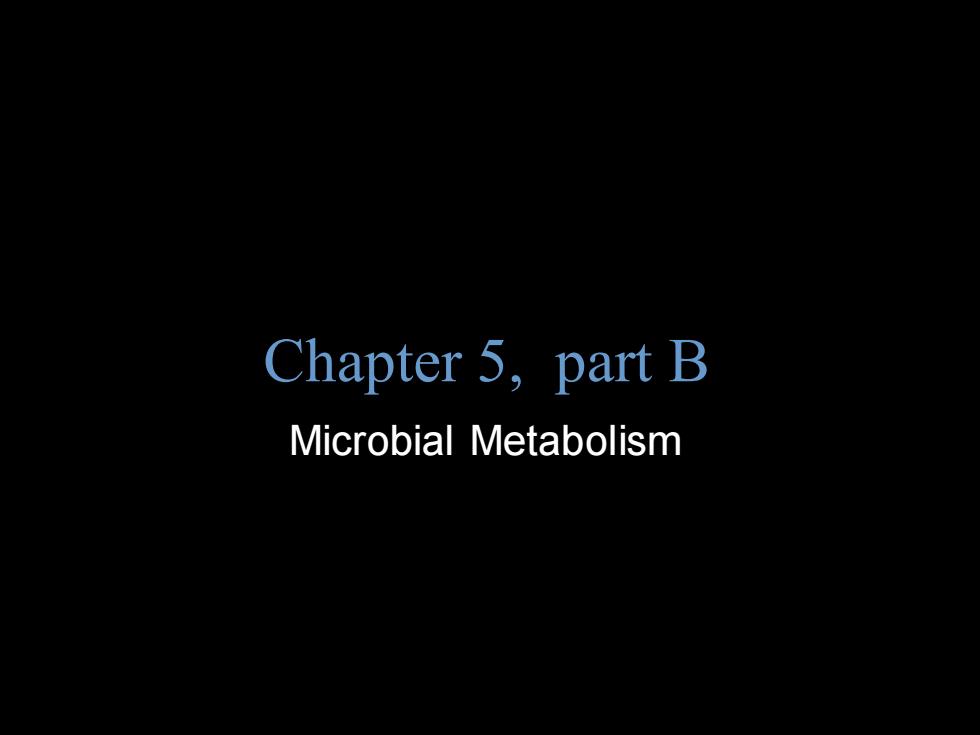
Chapter 5,part B Microbial Metabolism
Copyright © 2004 Pearson Education, Inc., publishing as Benjamin Cummings B.E Pruitt & Jane J. Stein Chapter 5, part B Microbial Metabolism
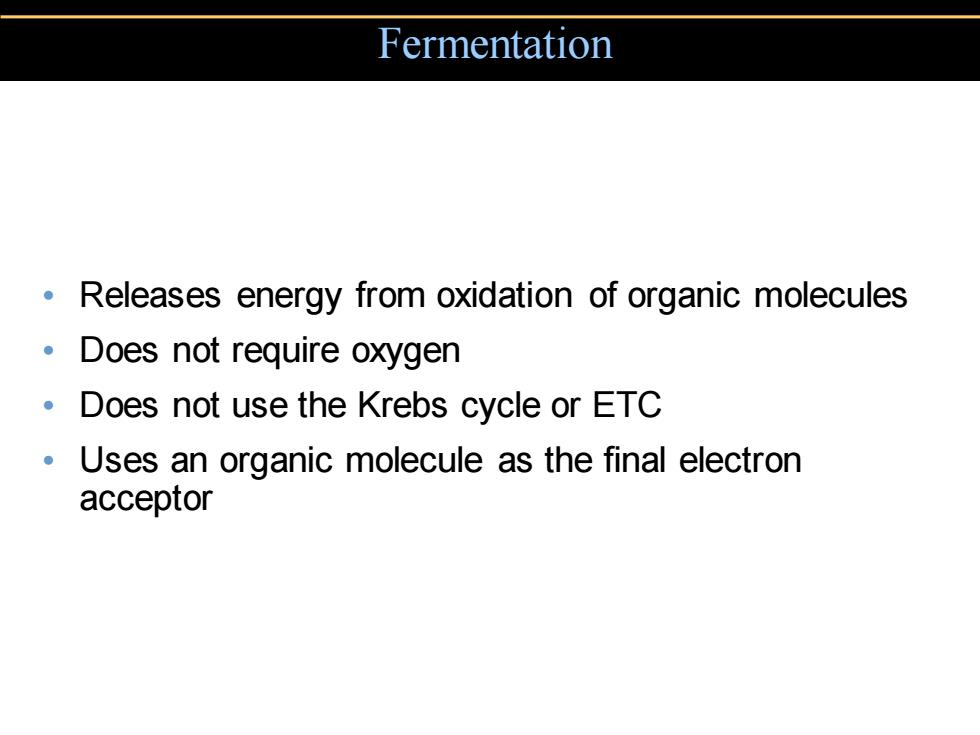
Fermentation Releases energy from oxidation of organic molecules Does not require oxygen Does not use the Krebs cycle or ETC Uses an organic molecule as the final electron acceptor
• Releases energy from oxidation of organic molecules • Does not require oxygen • Does not use the Krebs cycle or ETC • Uses an organic molecule as the final electron acceptor Fermentation

Fermentation Pyruvic Acid Streptococcus,Saccharomyces Propionibacterium Clostridium Escherichia, Enterobacter Organism Lactobacillus, (yeast) Salmonella Bacillus Lactic acid Ethanol Propionic acid, Butyric acid, Ethanol, Ethanol,lactic Fermentation and CO2 acetic acid, butanol,acetone, lactic acid, acid,formic acid, end-product(s) CO2,and H2 isopropyl alcohol, succinic acid,butanediol,acetoin and CO2 acetic acid, CO2,and H2 CO2,and H2 Figure 5.18b
Fermentation Figure 5.18b
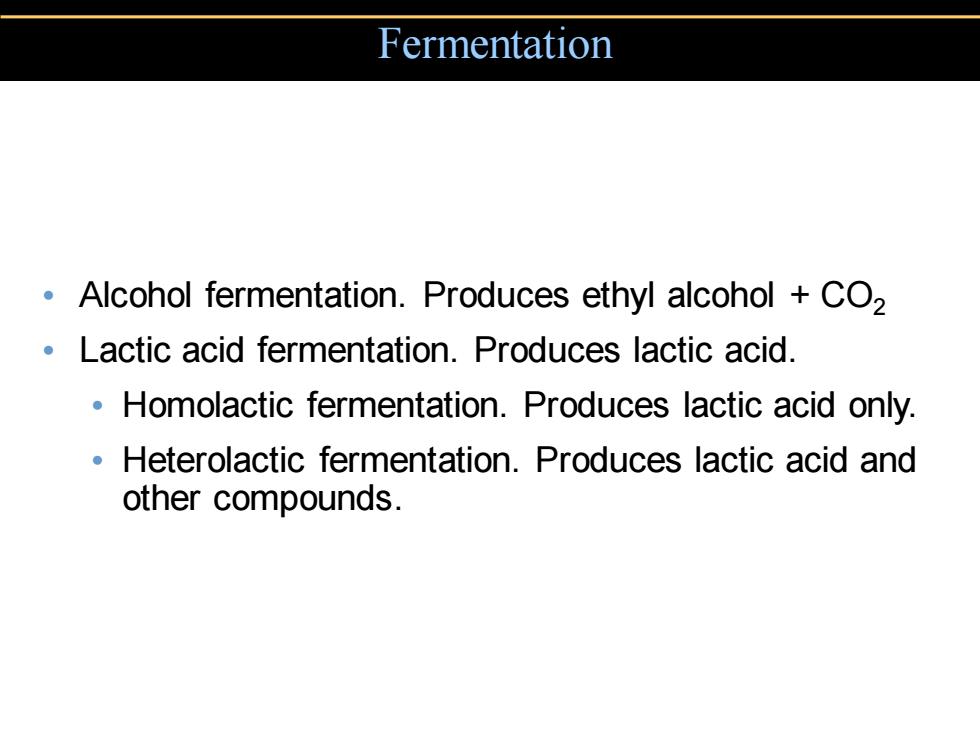
Fermentation Alcohol fermentation.Produces ethyl alcohol CO2 Lactic acid fermentation.Produces lactic acid. Homolactic fermentation.Produces lactic acid only. Heterolactic fermentation.Produces lactic acid and other compounds
• Alcohol fermentation. Produces ethyl alcohol + CO2 • Lactic acid fermentation. Produces lactic acid. • Homolactic fermentation. Produces lactic acid only. • Heterolactic fermentation. Produces lactic acid and other compounds. Fermentation
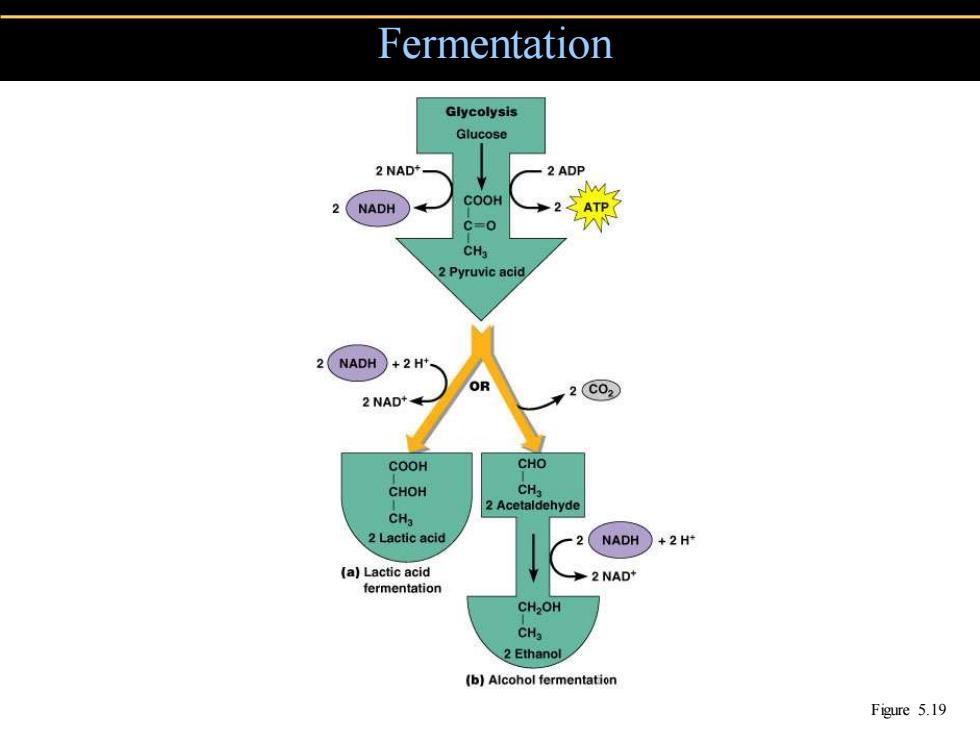
Fermentation Glycolysis Glucose 2 NAD+- ·2ADP COOH 2 NADH 2 ATP C=0 2 Pyruvic acid 2(NADH +2H OR 2C02 2 NAD* COOH CHO CHOH CH3 2 Acetaldehyde CHa 2 Lactic acid NADH )+2H (a)Lactic acid 2 NAD+ fermentation CH2OH CHa 2 Ethanol (b)Alcohol fermentation Figure 5.19
Fermentation Figure 5.19
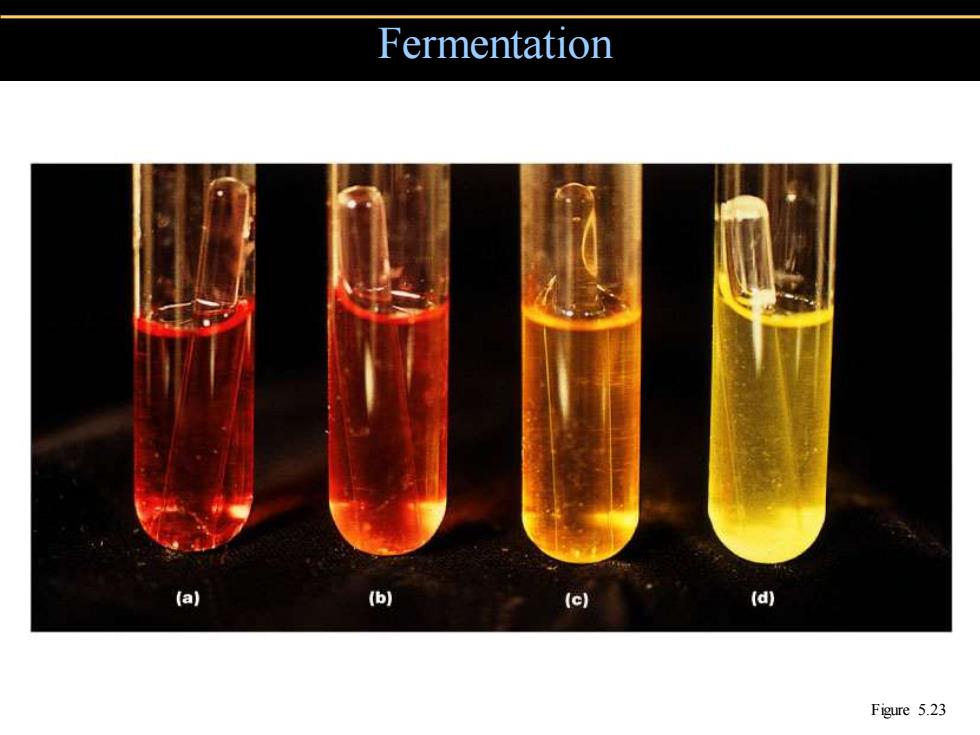
Fermentation (a) c (d) Figure 5.23
Fermentation Figure 5.23
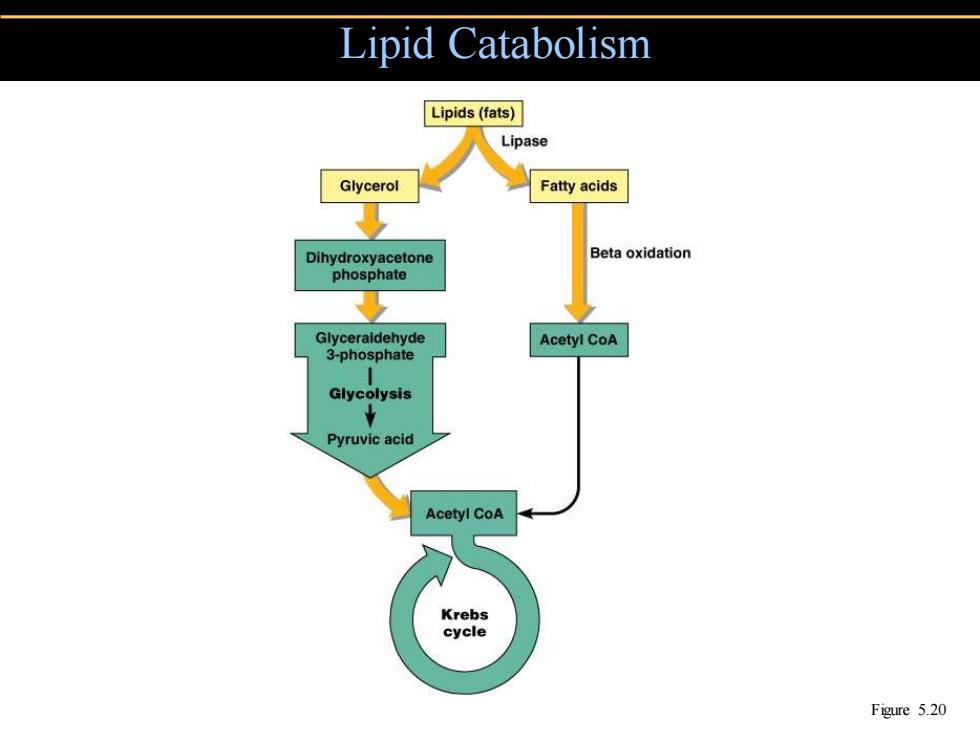
Lipid Catabolism Lipids(fats) Lipase Glycerol Fatty acids Dihydroxyacetone Beta oxidation phosphate Glyceraldehyde Acetyl CoA 3-phosphate Glycolysis Pyruvic acid Acetyl CoA Krebs cycle Figure 5.20
Lipid Catabolism Figure 5.20

Protein Catabolism Extracellular proteases Protein →Amino acids Deamination,decarboxylation,dehydrogenaion Organic acid→ Krebs cycle
Protein Catabolism Protein Amino acids Extracellular proteases Krebs cycle Deamination, decarboxylation, dehydrogenation Organic acid
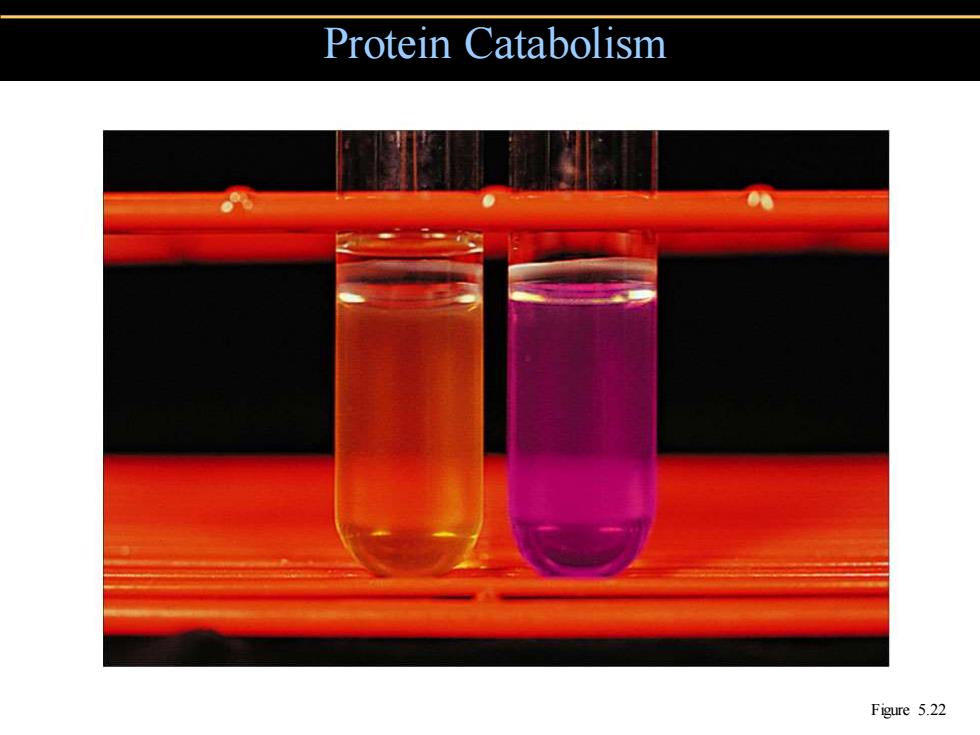
Protein Catabolism Figure 5.22
Protein Catabolism Figure 5.22

Biochemical tests o Used to identify bacteria. Can they ferment lactose? No Yes Can they use Can they use citric acid as their citric acid as their sole carbon source? sole carbon source? No Yes No Yes Shigella: Salmonella: Escherichia Do they Produces lysine Generally produce decarboxylase. produces H2S acetoin? No Yes Citrobacter Enterobacter Figure 10.8
Biochemical tests Figure 10.8 • Used to identify bacteria